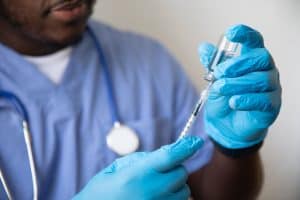
Mallinckrodt gets two thumbs down from FDA for jaundice drug
pharmafile | May 4, 2018 | News story | Medical Communications, Sales and Marketing | InfaCare, Mallinckrodt, biotech, drugs, pharma, pharmaceutical
Mallinckrodt paid $80 million, with a further $345 million dependent on milestones, to acquire InfaCare in the hope that the latter’s treatment for jaundice in new-borns would gain a quick approval.
InfaCare had actually received fast track status for stannsoporfin, based on two Phase 2b trials, by the time the acquisition went ahead; however, the FDA’s advisory committee was less than impressed by the data on show and delivered two blows to the drug.
The committee voted 3-21 that the risk-benefit profile of the drug wasn’t sufficient for them to recommend it for approval. In a further blow to the drug’s reputation, only six members of the panel were convinced that the drug actually showed evidence of effectiveness, with 17 other members not being persuaded by the data on show.
The decision leaves Mallinckrodt in a difficult position, having only just invested $80 million in the drug, when the purchase went ahead in August 2017, it now faces the prospect of having to return the drug to the clinic in the hope it can provide data that would be able to change the FDA’s mind.
The company released a statement, reading: “Mallinckrodt appreciates the committees’ review and discussion of stannsoporfin, and will work closely with the FDA as the review process continues. Given the outcome of today’s meeting, the company is evaluating alternatives for this development program.”
When InfaCare first applied to the FDA, it was seeking an indication for stannsoporfin to be used as supplementary therapy to phototherapy in the treatment of babies of 35 weeks or older suffering from haemolysis and hyperbilirubinemia, in order to prevent severe bilirubinemia encephalopathy or kernicterus.
The latter conditions are particularly rare, only occurring in somewhere between seven and 40 of new-borns per every 100,000 births. This makes developing data on the efficacy of medicine particularly difficult, which may have complicated the data and the subsequent dismissal of the drug.
“There are many unanswered questions”, said Wael Sayej, a pediatric gastroenterologist at the Ochsner Health System and Clinical School in New Orleans and part of the advisory commitee. “The sample size is too small […] to calculate a number needed to treat. In addition to that, to calculate a number needed to harm is also even more difficult”.
Ben Hargreaves
Related Content

FDA approves IMIDEX’s AI-powered device VisiRad XR
The technological pharmaceutical company IMIDEX has been granted clearance from the US Food and Drug …

Artiva Biotherapeutics announces FDA clearance of IND for AlloNK and Rituximab combo
On 16 August 2023, the US Food and Drug Administration (FDA) officially cleared Artiva Biotherapeutics’ …

Zumutor’s cancer drug trial cleared by FDA
On 11 August 2023, the biopharmaceutical company Zumutor Biologics announced that the trial of its …








